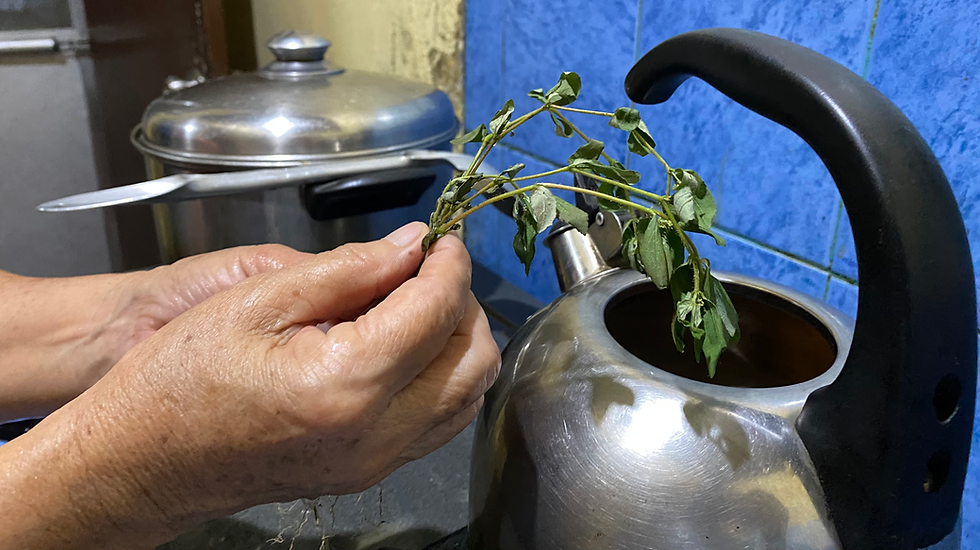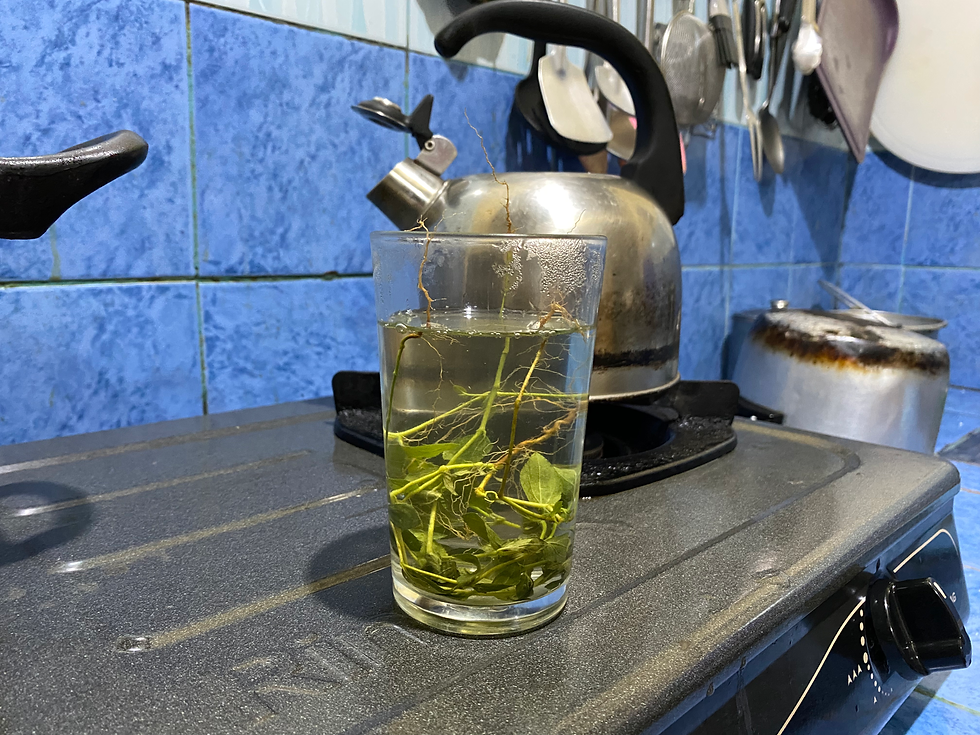Tawa-Tawa: The Filipino Herbal Remedy That Heals with Laughter
- Juliana Betervo

- Aug 4
- 5 min read
A lot of people say that laughter is the best medicine—I believe that's true, and I can prove you right. Discover how a humble Filipino herb, often found in your garden, proves that true healing doesn’t need to be expensive.
What Is Tawa-Tawa (Euphorbia hirta)?
Euphorbia hirta, or as we call it in the Philippines, Tawa-Tawa—which literally translates to “laughter” — is a traditional medicinal herb widely used across Southeast Asia, especially in rural communities. It has gained popularity for its supposed healing and health beneficial properties, particularly in treating dengue fever and other common ailments.

Why Filipinos Believe in the Healing Power of Tawa-Tawa
Growing up in a country where traditional healing methods are deeply rooted in our culture, this herb was known as the cure for almost every illness. Unlike other pills and medicines that cost money, drinking this herbal remedy came with no side effects. As a child raised in a household filled with elders, I’ve personally experienced the healing and health benefits it offers.
Low blood platelets, asthma, flu, wounds—every illness or injury imaginable—this was our go-to remedy. And as for how it’s prepared? It always varied, depending on how strong or effective we needed the herb to be.
A friend of mine who grew up in the same neighborhood once told me: “Dati nga, pinapainom sa akin ’to nang pinipiga lang—mapait, pero gagaling ka agad kinaumagahan. ‘Parang magic,’ pang-uto pa sa akin ni Mama. Matatawa ka talaga.”
“Back then, my mom would make me drink it freshly squeezed—bitter, but I’d feel better by the next morning. ‘It’s like magic,’ she’d say to convince me. I assure you, it’ll make you laugh.”
My sisters and I once had dengue—a mosquito-borne viral disease commonly found in tropical and subtropical regions, especially in the Philippines. Since our family is deeply rooted in tradition and believes in the healing power of simple herbs, tawa-tawa was one of the natural remedies given to us. Alongside proper medical advice and consistent intake of this herbal remedy, we were able to recover in less than a week.
How Filipino Families Prepare Tawa-Tawa Tea or Juice at Home
Drinking that herb is like drinking a concentrated bitter melon, but we had no room to complain. In a household where healing quickly was the goal, the most effective way to take this herbal medicine—although more bitter and harder to swallow—was through the fresh juice. The leaves and stems were crushed, and the juice squeezed out, either taken by the spoonful or mixed with warm water.

Some families—ours included—would even apply the fresh extract directly onto wounds or rashes for its believed antibacterial properties.
In other instances, when taken more mildly, Tawa-Tawa is most commonly prepared as a herbal tea or decoction, especially for treating dengue fever, flu, or low platelet count. The usual method involves gathering around five to ten fresh whole plants from the yard, washing them thoroughly, and boiling them in a liter of water for about 15 minutes. Once done, the mixture is left to cool before being strained and served.
The tea is usually taken several times a day, depending on the severity of the condition. In some households, like ours—especially when someone is seriously ill—the water is reduced further to make the tea more concentrated. And with that, the healing usually follows.
Tawa-Tawa in the Modern World: Is It Being Forgotten?
My mother once said: “It is a herbal tradition we've carried on for years—simple lang, at sigurado ka talaga dito. Pero sa panahon ngayon, mahirap na humanap ng ganito. Minsan, akala mo Tawa-Tawa, pero damo na pala. Puro tableta na rin ngayon; nawawala na ang halaga ng herbal.”
"It’s a herbal tradition we’ve carried on for years—simple, yet something you could really count on. But nowadays, it’s hard to find the real thing. Sometimes you think it’s Tawa-Tawa, but it turns out to be just ordinary grass. Everything’s in tablet form now, and the value of herbal medicine is slowly being lost."

Tawa-Tawa, though still known as one of the best herbal remedies, is slowly being forgotten in a world that continues to embrace modern technology. What once felt like a childhood trauma—being chased around just to drink it—is now a fading but treasured memory.
But that isn’t the end of laughter’s legacy. These days, some choose to dry the leaves for storage or grind them into powder for capsules. Still, for many of us, nothing beats the freshly boiled tea passed down by our mothers and grandmothers.
I once asked my sister what she would do if given capsules instead of fresh leaves, and she laughed: “Wala, parang alaala na ’yan sa akin. Ilang palo inabot ko para inumin ’yan, at iinumin ko pa rin ’yan.”
"Nothing—it’s like a memory to me now. I got hit so many times just to drink that, and yet I’d still drink it again.
Being part of a generation that heavily relies on technology, it’s hard to explain why this herb works for some of us—me, my family, and our traditional neighborhood—especially to those who’ve never experienced taking it even once.
Now, with everything turning into pills and prescriptions, I realize how precious those moments were.

Looking back and remembering how this herb once saved our health, I realize it’s not just some plant we pick and boil, it’s a reminder of our parents’ love and care that lasts even today. I still remember the bitter taste, the scolding from my mother, and the strange sense of calm that came after every sip. It wasn’t just about healing the body; it was about trusting something simple, natural, and rooted in love.
It’s the kind of medicine that would require your elders to chase after you—just to get you to drink even a sip. The kind of medicine that would make your grandmother laugh so hard her stomach hurt because of the face you made while drinking it.
The kind of herb that would make you tawa nang tawa—laugh and laugh—until you healed.
It is the medicine that laughs.
The living proof that, indeed, laughter is the best medicine.
The author is a student writer with a deep interest in cultural wellness.




















